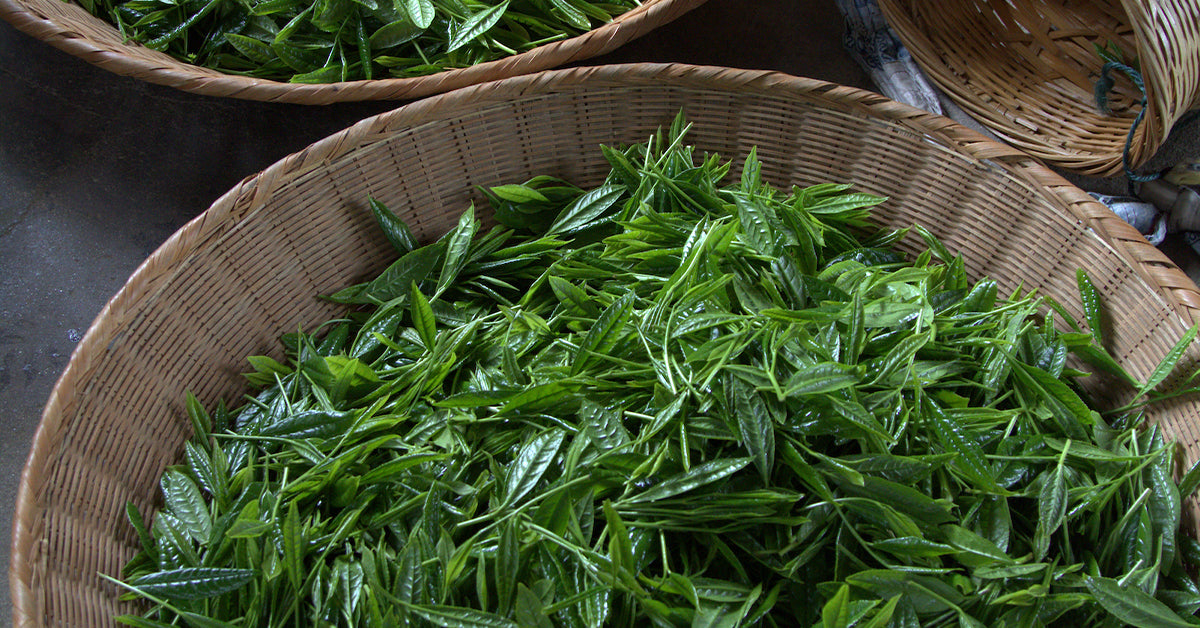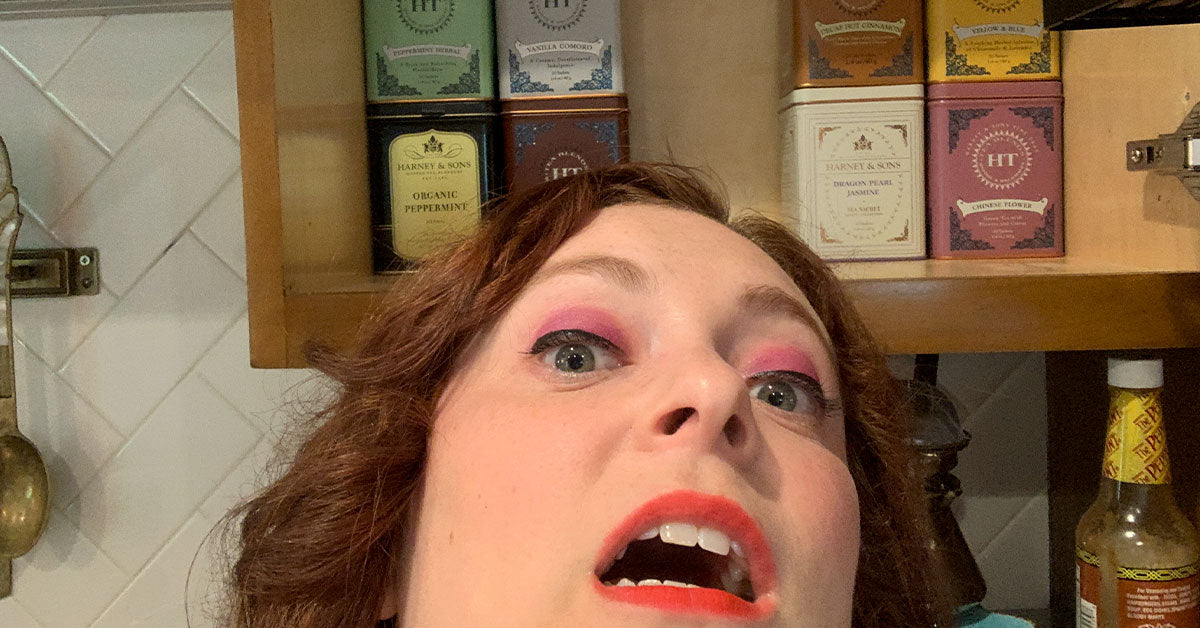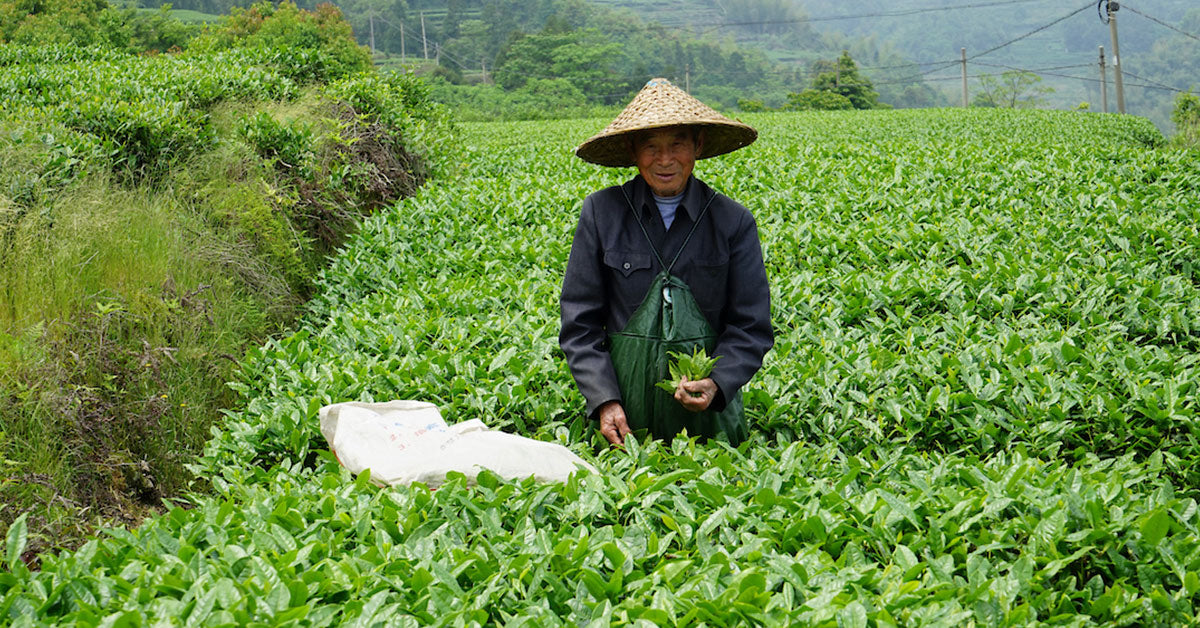If you’re a student or even just a casual fan of tea, you’ve likely run across these three “thea” words before. We thought it would be interesting and informative to showcase these tea elements and throw a little knowledge your way.
Two of them are very similar, and one is its own thing. So we’ll start with it: theanine.
Theanine: Tea’s Wonderful Amino Acid
This chemical, most often found in tea plants but also in some mushrooms, comes in two forms -- L-theanine and D-theanine. L-theanine is the form most commonly found in tea. It is believed to act as a neurotransmitter that induces relaxation, increases concentration, and soothes as it stimulates. This makes tea a milder, more beneficial pick-me-up than coffee or chocolate (not that we are throwing shade at chocolate!). Theanines are found most abundantly in black and green teas.
Amino acids like theanine influence tea’s body, giving teas their relative brothiness, or umami. Theanine seems to create the most mouth-filling qualities. Japanese tea makers frequently speak of the favorable theanine levels in their best teas. In Japan, the prized gyokuro tea is made from leaves that are plucked from shaded tea bushes. Shading interrupts the normal leaf activity and stimulates an abundance of theanine production. Thus, the Japanese believe that shaded teas contain the highest amount of theanine possible.
While there is no hard scientific data to support the health benefits of this chemical, it is widely believed that L-theanine is helpful for anxiety, mental impairment, stress, and other conditions. You should consult a doctor before taking any theanine supplements, but certainly a cup of tea or three won’t do any harm (and could likely do some good!).

Theaflavins & Thearubigins
While it sounds like the name of a sitcom about two feuding families who live next to each other, these are actually polyphenols found in tea that come to life during the oxidation process, which means they are found primarily in black teas since green and white teas are fixed and not oxidized. They are also found to a lesser degree in oolongs, which are semi-oxidized, but in reverse proportions than black teas (more theaflavins, less thearubigins).
During oxidation in tea, an enzyme in the leaves reacts with oxygen to create new brown-colored compounds called flavonoids (a subclass of polyphenols). It’s important to know that the levels of these flavonoids not only determine the tea’s color, they also influence its flavors and body. As oxidation begins, the first flavonoid to emerge is called “theaflavin,” which makes the tea golden but also quite brisk and puckery.
If oxidation continues, milder flavonoids called “thearubigins” emerge and give the tea a rounded, gentler body and a darker brown color. The slower the oxidation, the more thearubigins, the mellower the tea.

Generally speaking, Chinese black teas consist mostly of thearubigins, since Chinese tea makers slow down oxidation as much as possible. First, they roll the leaves very gently, keeping the leaves as whole as possible. Macerating the leaves only very lightly slows down oxidation by preventing the enzymes from breaking out of the leaf cells into the air. Then the tea makers pack the leaves into deep, finely woven bamboo baskets that limit access to oxygen. The leaves remain in the baskets for several hours, where they oxidize very slowly. Loaded up with thearubigins, the teas taste delightfully rounded and gentle. So, in other words...the slower the oxidation, the more thearubigins, the gentler the tea. This is why, since oolongs are only semi-oxidized, they have more theaflavins than fully oxidized teas.
While green and white teas are getting all the health-benefit press, all classes of teas contain polyphenols. Some researchers believe that the activation of tea enzymes during the manufacture of black tea may actually result in the creation of antioxidant compounds that are more powerful in preventing some diseases than those contained in green tea.
Bottom line: no matter which type of tea is your jam, there’s likely something good for you in that cuppa. And that’s thea truth!





3 comments
James Fleming MD
Thank you, great insight for the complex taste of teas!!
Thank you, great insight for the complex taste of teas!!
A E
I have wondered if adding milk to tea has any effect on the polyphenols? Specifically, if it lessens their healthful effects? I’m hoping the answer is no.
I have wondered if adding milk to tea has any effect on the polyphenols? Specifically, if it lessens their healthful effects? I’m hoping the answer is no.
Pamela Zajicek
Back in the early 2000’s I picked up a box of oolong tea from Wedgwood (British china company). It was the smoothest, best tasting tea I have ever had and have not been able to find it since. I bought it in an American store (maybe Macy’s) in MN. I wondered if you had ever seen it or heard of it. I don’t know if they make it anymore.
Back in the early 2000’s I picked up a box of oolong tea from Wedgwood (British china company). It was the smoothest, best tasting tea I have ever had and have not been able to find it since. I bought it in an American store (maybe Macy’s) in MN. I wondered if you had ever seen it or heard of it. I don’t know if they make it anymore.